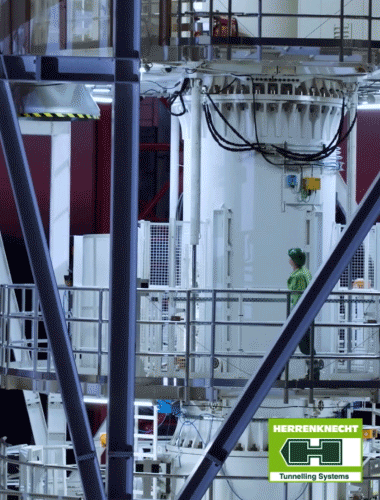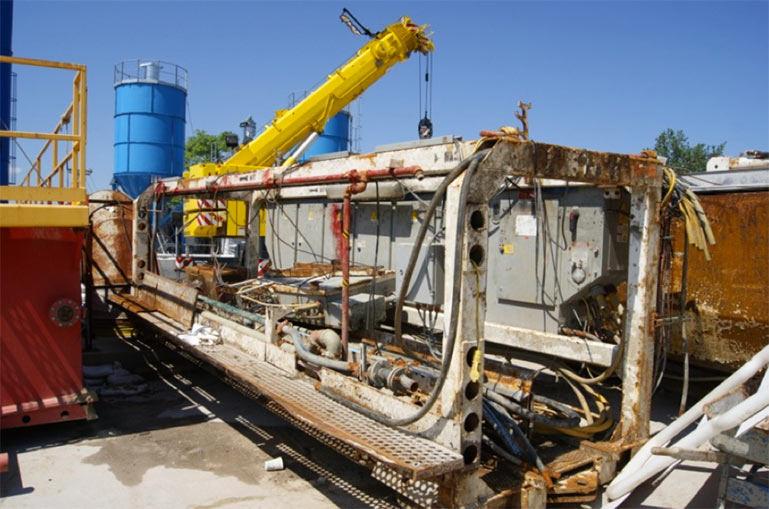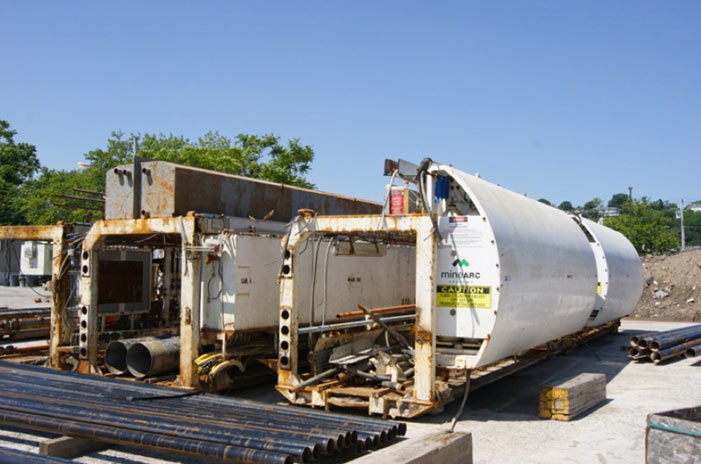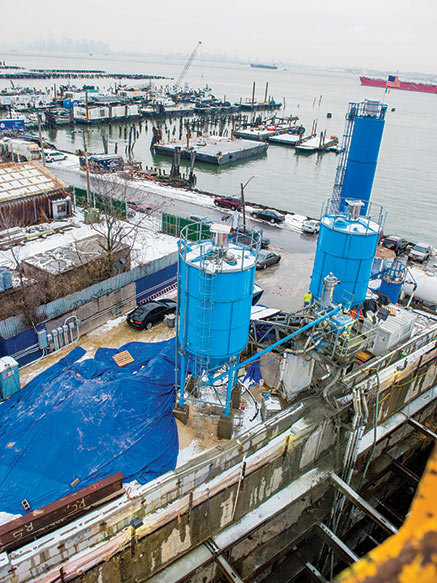Flood damaged EPBM triumphs in New York 25 Feb 2015
Excavation of the flood-hit US$250 million New York City Harbor siphon tunnel is complete, 27 months after the Caterpillar TBM selected for the job became completely submerged with salt water following the devastation of Superstorm Sandy.
Completion of the tunnel is especially remarkable for the fact that Robbins engineers were required to reverse engineer many of the unfamiliar electrical systems of a rival company’s machine. The flood damage forced a complete halt to TBM tunnelling operations for 18 months between October 2012 and April 2014.
The New York City Harbor Siphons Project – incorporating a 2.9km (1.8-mile) segmentally lined tunnel under the sea channel between Brooklyn and Staten Island was designed to replace two existing shallow water lines below the bay. A 3.8m diameter Caterpillar EPBM was procured by the contractor JV of Tully/OHL to complete the job.
The TBM, designed to drive through a geology comprising highly variable clays, sands, weathered rock and boulders, was launched from the 35m (115ft) deep Staten Island shaft, close to the shoreline, in August 2012, boring towards the 40m (131ft) deep Brooklyn shaft.
But just two months after launch, in October 2012, the unexpected happened: a massive hurricane, dubbed Superstorm Sandy, struck the US eastern seaboard with winds of up to 145km/h. Extreme flooding at the waterfront jobsite in Staten Island overtopped protective concrete barriers that had been designed 3ft above the 100-year flood level. Seawater rushed into the tunnel and the nearly 113m (370ft) long machine was entirely submerged only 460m (1,500 ft) into its drive. “Obviously this was our biggest challenge,” said Luis Alonso, Tunnel Manager for OHL. “After that, not many people thought we would be able to finish this tunnel.”
After the floodwaters began to recede, OHL set about determining the extent of damage to the machine. The TBM and back-up was found to be severely corroded by saltwater, and sat idle until July 2013. The original intention had been to transport the major TBM components, electrical systems and trailing gear back to the Caterpillar workshops in Toronto, Canada, for repair, but in May 2013 Caterpillar (formerly Lovat) suddenly and unexpectedly announced the impending closure of its TBM business, although at the time of the announcement it did state it would continue to service existing machines until 2016. Nevertheless, the contractor opted instead to look to other manufacturers for assistance in repairing the machine. “OHL was always determined to finish this project. After studying other options, we decided to proceed with the full refurbishment of the TBM with the help of The Robbins Company. The whole crew worked together to achieve that goal,” said Alonso.
Robbins coordinated the effort to replace corroded hydraulic components and all new electrical systems in mid-December 2013. Electrical systems had to be reverse-engineered, while the PLC had to be entirely redesigned. The refurbishment also centered on removing the rear 11 gantries and belt conveyor to be cleaned, evaluated and repaired. The rebuild took about four months, much of it done in the tunnel under water pressure. Crews were finally able to return to mining operations on April 14 last year (2014).
To ensure that the project remained on course, Robbins Field Service personnel remained onsite to support ongoing maintenance of the TBM. With their help, machine performance steadily increased, eventually reaching rates as high as 30.48m (100ft) per day, and as much as 25 rings in 24 hours in August last year (2014).
As excavation picked up, ground conditions changed from marine sediments (clay, silt and sand) to a glacial geology of sand, exceptionally hard boulders, and excessive water ingress, resulting in slow advance rates. “The TBM needed more thrust and we decided to implement four additional auxiliary cylinders. Robbins Field Service helped in developing the size, features and location of the cylinders, which were eventually placed in the lower quadrant of the propulsion system,” said Alonso.
With the new system installed, crews were able to re-establish forward progress. The constant hurdles continued into early October when a hyperbaric intervention at 4 bar of pressure was required to change the cutting tools in a pocket of glacial soils. Despite the new obstacles, the crew was able to steadily increase the rate of excavation to between five and seven rings/day.
“This tunnel is an important part of a larger project, and we are proud to be doing what we do every day, dealing with troubles as they come up, until we reach the end of the drive,” said Alonso. With tunneling completed on January 28 (2015), the stationary and tail shields will be buried at the exit shaft entrance, with the cutterhead and back-up being removed.
The project, managed by the New York City Economic Development Corporation (NYCEDC), involves replacing existing water lines with a deeper siphon in order to make way for a larger project – the dredging of the Anchorage Channel. The channel (part of New York Bay) is an important waterway for shipping, dredging it will allow larger ships carrying large cargo loads to pass through.
References
- Caterpillar explains TBM closedown decision – TunnelTalk, May 2013
- Inflatable protection against inundation – TunnelTalk, December 2012
- Superstorm Sandy devastates New York region – TunnelTalk, October 2012
- Post-Sandy pump out under way in New York – TunnelTalk, November 2012
- New York harbor crossing under way – TunnelTalk, September 2011
- Contractors call for risky NY Harbor crossing – TunnelTalk, Sep 2009
|
|
|
|
|
Add your comment
- Thank you for taking the time to share your thoughts and comments. You share in the wider tunnelling community, so please keep your comments smart and civil. Don't attack other readers personally, and keep your language professional.








